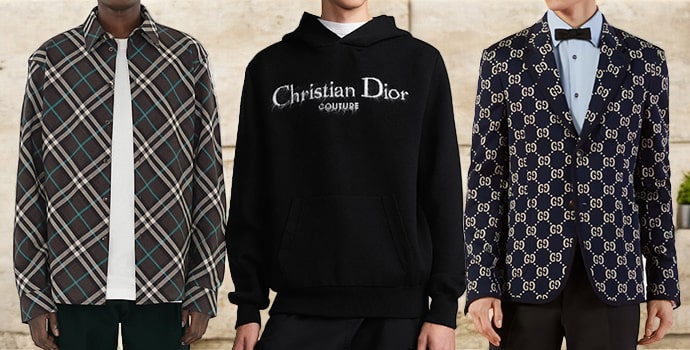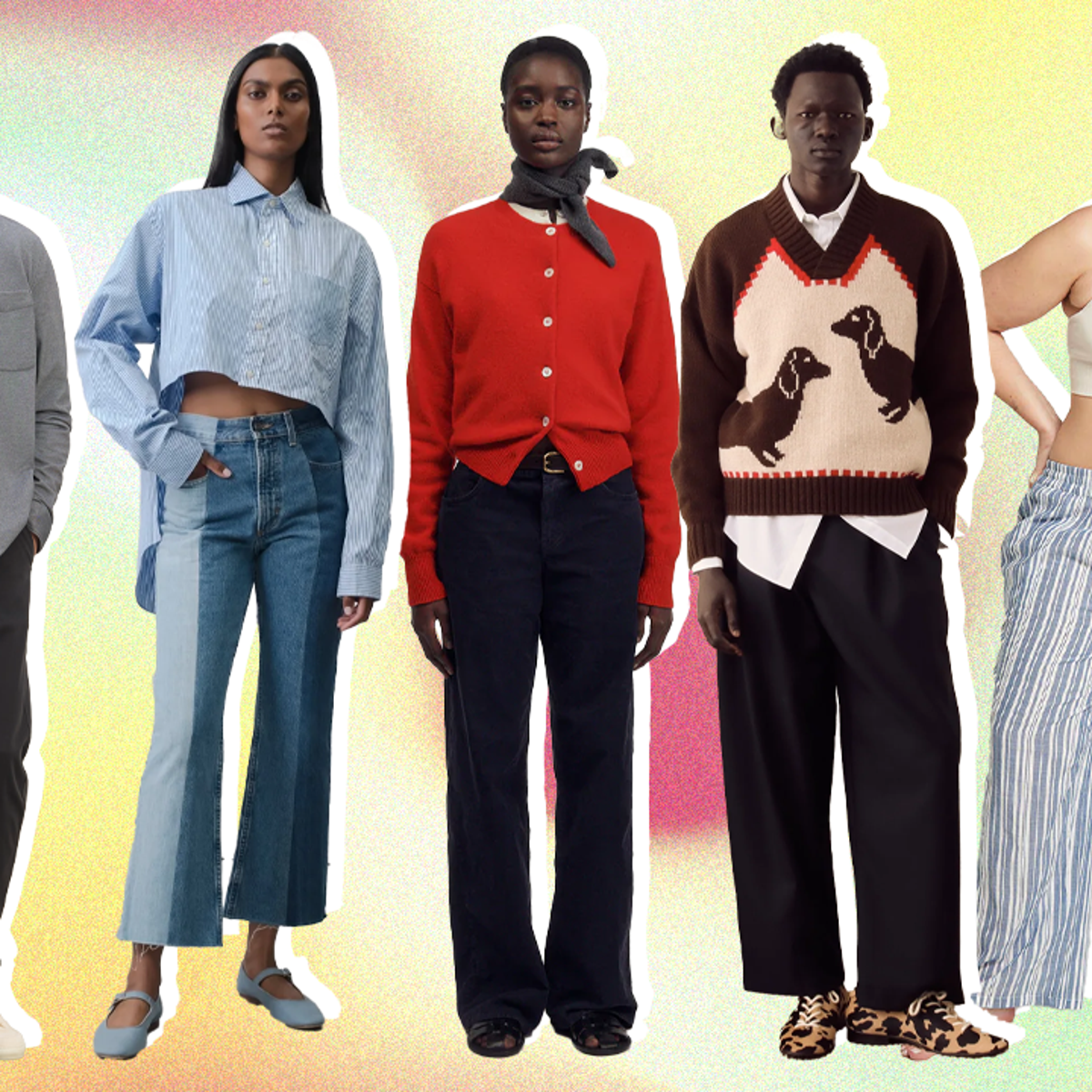Recognizing Clothing: The Relevance of Textile Options in Your Wardrobe
The option of fabric in apparel plays an essential role in both aesthetic appeals and functionality. Various materials supply differing levels of breathability, durability, and convenience, directly affecting the wearer's experience. Understanding these nuances can boost one's closet significantly. Yet, numerous forget exactly how these selections can influence not simply personal design, yet likewise sustainability. What textile decisions could redefine your closet and align it with both design and obligation?
The Duty of Material in vogue and Performance

Usual Fabric Kinds and Their Characteristics
When picking clothing, understanding the characteristics of common fabric types is vital for making informed selections. Cotton, a widely-used all-natural fiber, is recognized for its breathability, gentleness, and flexibility, making it suitable for sportswear and everyday garments. Bed linen, one more all-natural choice, flaunts excellent moisture-wicking properties and a distinctive structure, suitable for cozy climates.Wool, frequently favored for its warmth and longevity, varies in excellence; merino wool is soft against the skin, while coarser types are used for outerwear. Synthetic materials like polyester and nylon supply longevity and resistance to wrinkles, making them popular for activewear and traveling garments. Ultimately, blends, which integrate artificial and all-natural fibers, can boost performance while preserving convenience. By recognizing these textile qualities, people can select apparel that straightens with their lifestyle and aesthetic choices.
Breathability and Comfort: Picking the Right Fabrics for Various Environments
Picking the appropriate materials for numerous climates can substantially improve comfort and overall wearability. Breathable materials are important in warm environments, as they permit air flow and wetness evaporation. Fabrics such as cotton, linen, and moisture-wicking synthetics successfully draw sweat away from the body, keeping the user cool and completely dry. On the other hand, in chillier climates, thicker textiles like woollen or fleece provide insulation while maintaining breathability, guaranteeing warmth without overheating.Additionally, the selection of fabric weight plays an important function; lightweight textiles are more suitable for summer, whereas heavier options are suited for winter wear. Understanding the one-of-a-kind buildings of each material allows individuals to dress properly for varying weather. Eventually, choosing comfortable and breathable textiles tailored to certain climates can greatly improve daily convenience and boost the general experience of putting on clothes.
Toughness and Care: Just How Textile Affects Longevity of Your Wardrobe
Picking the right materials can greatly influence the durability and care demands of a wardrobe. Fabrics such as cotton and polyester are understood for their resilience and simplicity of upkeep, making them optimal for daily wear. In contrast, delicate products like silk and shoelace call for more cautious handling and specialized cleaning approaches, which can enhance the moment and initiative required for care. Branded Clothing.Durability is likewise affected by the textile's weave and coating; snugly woven textiles have a tendency to stand up to damage far better than freely woven alternatives. In addition, artificial blends commonly offer enhanced longevity, integrating the most effective high qualities of numerous fibers.Understanding the treatment directions for every fabric is necessary, as improper washing or drying can cause premature wear. Ultimately, choosing long lasting materials can lead to a longer-lasting closet, minimizing the frequency of substitutes and contributing to a more sustainable style selection
The Effect of Fabric on Fit and Silhouette

Lasting Fabric Options: Making Eco-Friendly Choices
The effect of textile expands beyond fit and silhouette to encompass environmental variables, motivating a growing interest in sustainable material selections. Environment-friendly fabrics, such as organic cotton, hemp, and Tencel, are acquiring grip amongst customers who prioritize sustainability in their closets. These products are frequently generated with fewer chemicals and water, lowering their eco-friendly footprint.Additionally, recycled textiles, made from post-consumer waste, offer an ingenious solution to the fabric market's air pollution problem. Brands increasingly welcome transparency in their sourcing approaches, permitting customers to make informed decisions regarding their purchases.Choosing sustainable textiles not only sustains honest practices however additionally motivates the fashion market to take on more liable production techniques. As awareness of ecological issues climbs, people are advised to assess the long-term effect of their fabric selections, promoting a movement in the direction of an extra ecologically mindful and sustainable approach to style.
Raising Style: Exactly How Textile Can Change an Attire
While many might concentrate on shade and cut when choosing an attire, the selection of textile plays a crucial role in elevating design and boosting total appearance. Various products share review unique moods and messages; for instance, silk exudes luxury and class, while denim provides an informal, loosened up ambiance. The texture and drape of a textile can considerably change the silhouette, with structured textiles providing a polished look and softer ones producing an extra fluid, loosened up aesthetic.Moreover, the weight of the textile affects wearability across seasons. Light-weight materials like linen and cotton are suitable for summer, while much heavier materials such as woollen and velvet provide warmth and elegance in colder months. Understanding textile residential or commercial properties, such as breathability and stretch, also encourages people to make educated choices that enhance comfort without endangering style. Inevitably, the appropriate material can transform an outfit from normal to extraordinary, making it an important factor to consider in any type of wardrobe.
Frequently Asked Inquiries
Exactly how Do I Identify the Fabric Content of My Clothing?
To determine material content web content, one can analyze care tags, conduct burn examinations for fiber identification, or get in touch with textile swatches. These methods aid separate products, making sure informed options for clothes treatment and upkeep in everyday wear.
Can Material Option Affect My State Of Mind or Confidence?
Textile choice can greatly impact a person's mood and self-confidence. Branded Clothing. Certain products might evoke sensations of comfort or sophistication, while others can feel restrictive or uncomplimentary, ultimately affecting self-perception and emotional health throughout the day
What Fabrics Are Best for Sensitive Skin?
For individuals with sensitive skin, all-natural fabrics like cotton, bed linen, and bamboo are commonly advised. These products are breathable, hypoallergenic, and much less likely to cause irritability, making them appropriate selections for convenience and skin wellness.
Exactly how Do I Properly Laundry and Care for Various Fabrics?
To effectively wash and care for different fabrics, one have to take into consideration each product's specific demands, consisting of temperature level settings, detergents, and drying out methods, ensuring longevity and keeping the textile's original qualities for suitable use.
Are There Particular Fabrics for Athletic or Performance Use?
Sports or performance wear often utilizes materials such as polyester, nylon, and spandex. These materials are created for moisture-wicking, breathability, and flexibility, enhancing activity and comfort throughout exercises while giving resilience and support. On the other hand, in colder environments, thicker textiles like wool or fleece offer insulation while preserving breathability, making sure heat without overheating.Additionally, the selection of fabric weight plays an essential function; light-weight materials are better for summer, whereas larger options are matched for winter wear. In contrast, delicate products like silk and lace need even more cautious handling and specialized cleansing methods, which can enhance the time and initiative needed for care.Durability is also affected by the textile's weave and coating; tightly woven textiles often tend to resist wear and tear much better than loosely woven choices. In contrast, inflexible textiles can limit activity however give a traditional, refined look.Moreover, the density and texture of the material can influence the visual perception of body form. The impact of fabric prolongs beyond fit and silhouette to encompass ecological elements, prompting a growing rate of interest in lasting material selections. The structure and drape of a textile can dramatically alter the silhouette, with structured materials offering a refined appearance and softer ones developing a much more fluid, relaxed aesthetic.Moreover, the weight of the fabric affects wearability throughout periods.